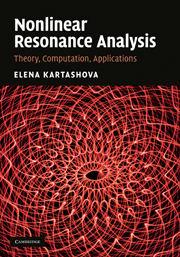3 - Kinematics: Resonance clusters
Published online by Cambridge University Press: 06 December 2010
Summary
Ivan worked assiduously, crossing out what he had written, putting in new words, and even attempted to draw Pontius Pilate and then a cat standing on its hind legs.
M. Bulgakov Master and MargaritaAn easy start
The classical way to represent nonlinear resonances graphically is by the construction of so-called resonance curves. A resonance curve is the locus of pairs of wavevectors interacting resonantly with a given wavevector. Its construction, very popular in the 1960s, gives some useful, though partial, information about possible resonances in a wave system. For instance, in [152] and [195] resonance curves are regarded for three- and four-wave resonance systems, respectively. The form of the resonant curve changes drastically according to the magnitudes of the wavevectors. A locus might be an ellipse, be shaped like an hour-glass, or even degenerate into a couple of lines. Examples of resonance curves for ocean planetary waves, with a dispersion function of the form (2.21), are shown in Fig. 3.1.
Without knowledge of the wave numbers corresponding to the complete resonance set, all this information is only qualitative, of course. Eventually, the characteristic form of loci is useful to know before planning any laboratory experiments. For instance, in [195] a special type of resonant quartet of surface gravity waves is studied in which two wavevectors coincide. This special configuration was chosen because it “is convenient for experimental study”.
- Type
- Chapter
- Information
- Nonlinear Resonance AnalysisTheory, Computation, Applications, pp. 64 - 89Publisher: Cambridge University PressPrint publication year: 2010



